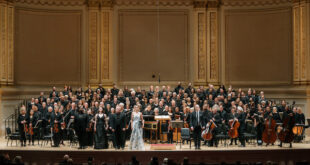Birmingham, England gave birth to heavy metal when four lads named John (Ozzy) Osbourne, Bill Ward, Terry (Geezer) Butler, and Tony Iommi got together in 1968. It would take less than a couple of years for the foursome to hone their sound, but when the world heard Black Sabbath in 1970 for the first time, legions of fans would hear and get blown away by not one but two classic and genre-inventing albums: Black Sabbath and Paranoid.
 Master of Reality followed in 1971, giving birth to stoner rock/metal (“Sweet Leaf”) and the song with what may be the most influential metal riff of all time, “Children of the Grave.” There is no underestimating how ahead of their time these LPs were – and jaw-dropping. Sabbath Bloody Sabbath, Vol. 4, and Sabotage were among other ’70s albums that continued breaking ground, and inspiring kids around the world to form bands.
Master of Reality followed in 1971, giving birth to stoner rock/metal (“Sweet Leaf”) and the song with what may be the most influential metal riff of all time, “Children of the Grave.” There is no underestimating how ahead of their time these LPs were – and jaw-dropping. Sabbath Bloody Sabbath, Vol. 4, and Sabotage were among other ’70s albums that continued breaking ground, and inspiring kids around the world to form bands.
Nearly 50 years and several breakups, albums, lineup changes, and reunions later, Ozzy, Butler, and Iommi are calling it a career – at least on the live performance front. Iommi was diagnosed with cancer in recent years, and though it is currently in remission, he can no longer put his body through extensive tours. Sabbath wrapped up their 81-date world tour back home in Birmingham on February 4 of this year. “The End” was the name of that tour, and on November 17, that final show was (no surprise) released on vinyl, digital, CD, DVD and Blu-ray formats as The End via Eagle Rock. Reviewed here is the DVD + CD package.
Main Set (Recorded Live at Genting Arena)
The sold-out arena was ready to celebrate with the greatest and most innovative metal band in the world from the opening notes of Iommi’s slowly crafted tritone stabs on “Black Sabbath” and onward ’til the very end of the 17-track set, “Paranoid.” Yes, the crowd knew and sang all the words to the Sabbath classics along with Ozzy. But what makes Ozzy such a beloved frontman is that if the audience let up their energy level for even one minute, he wouldn’t have it. His constant pleadings to “Go crazy!” and clap along was his way of making sure his fans give back as much energy as the band was giving them – at all times.
Everyone knows the hits but it’s the thunderous rhythms of deep cuts like “Under the Sun” and (anti-nuclear war fan favorite) “Children of the Grave” where Black Sabbath’s unrelenting power has always shined brightest (or darkest). And underappreciated cuts like “After Forever” and “Into the Void” (Sabbath’s most epic metal masterpiece) never sounded more ferocious.
Though many have tried, no one can ever replicate the monstrous sound of Iommi. Whether it’s Laney amps or assorted Gibsons (and others), his razor thick sound was on full display at this final show. And Butler has never lost his speed and agility on the fretboard of his bass. His “Bassically” wah-wah pedal-powered solo (which leads into fan favorite “N.I.B.”) makes me think of the late great Metallica bassist Cliff Burton and how much he was influenced by the Geezer. Drummer Tommy Clufetos got his turn to solo too, and like Ozzy, got the audience to shout at his command. His drumming elsewhere made a tough job look so easy – and taking the place of a legend like Ward (who had a falling out with BS several years ago) is a giant task.
You can hear hints of future metal superstars like Motley Crue on “Megalomania” (originally from 1975 LP Sabotage and on this night part of an incredible medley that also included “Supernaut” and “Sabbath Bloody Sabbath”). The grin on Iommi’s face as he played the riffs to it had the “Yup, I know it rules too – cuz I invented it” look that you just can’t blame him for giving to the adoring, headbanging masses.
The camera work for that shot and this release as a whole was led by director Dick Carruthers. He occasionally mixes in some slow motion shots alongside the usual timely flashes of each band member, the audience, and stage theatrics. Some of those camera jumps can be too quick and dizzying, but those instances are few in number. To me, one of Carruthers’ best camera shots was the long closeup of Iommi’s extended solo during “Dirty Women.”
It’s not listed but Iommi played the short classical-ish instrumental “Embryo” right before “Children of the Grave.” I always thought that on record, that lead-in worked brilliantly as a calm before the storm kind of thing. Seeing those two being played back-to-back live at their final show was the right move.
After this, you see the band going backstage for a few minutes and then hear the deafening roar of the crowd when Iommi’s guitar tech helps him strap on his guitar one final time (for the encore). The last song Sabbath played was one that the band did not think much of when they first jammed on it in 1970. That three-minute jam, once lyrics got added, turned out to be “Paranoid” and for the Birmingham faithful, got extended, complete with black confetti, balloons in the air, and an emotional Ozzy thanking the fans not only for his career but for his life.
The Angelic Sessions
Recorded live in studio just days after their farewell show, these sessions are a total surprise. And it’s a pretty impressive one – fresh versions of selected old classics not played on tour. In order, they are: “The Wizard,” “Wicked World,” “Sweet Leaf,” “Tomorrow’s Dream,” and “Changes.” (You get the five songs played here on CD as well, but for reasons explained below, you’ll want to have the experience of watching the whole unedited session on your DVD or Blu-ray too.)
If you ever needed a reminder that Sabbath started out as blues rockers (like so many of their British peers in the ’60s), seeing Ozzy with a harmonica lead his bandmates into “The Wizard” best represents a taste of that early phase. One can only imagine how (more) nuts fans would’ve gotten had the band and Ozzy, harp in hand, played this one on the tour. In any event, this was a rare treat.
Before starting “Sweet Leaf,” you see and hear Ozzy saying he was tired near the end of a previous take and wanted to do it again. You may think this is a small thing, but even for a guy in his ’60s, the Prince of Darkness still expects a high standard for himself, and he’ll be damned if he turns in a weak performance for his fans to see. This is a vocally challenging song to sing, and on this take that made these sessions, you hear him still fight to sustain those demanding high notes a bit, but he’s mostly on target. (The demanding vocals is likely why the band didn’t play this on tour – better to can it rather than risk a shaky vocal performance and tire Ozzy out. That’s why they are pros.)
“Changes” is the closer here, and a pretty powerful one at that. Having just Iommi, Butler, and Ozzy ending the session and thus, this release, is perfect. And with just quiet synths (played by Butler) and delicate piano (by Iommi) backing him, you see and hear Ozzy’s vocals soar with the same raw emotion and tone he’s always had. I dare say it’s the most beautiful vocal performance of his entire career.
In The End
Black Sabbath’s final show wasn’t so much a performance as it was a celebration, one that included fans from around the world – from all over Europe, Asia, and America to as far away as Australia. This just proves that heavy metal is still one of the only truly universal, unifying forces in the world. Even with its often dark themes, it remains a thrilling, uplifting type of music, and this is the band that started it all. If the group really never tours again, you can proudly rave that Sabbath went out on top.
 Blogcritics The critical lens on today's culture & entertainment
Blogcritics The critical lens on today's culture & entertainment




